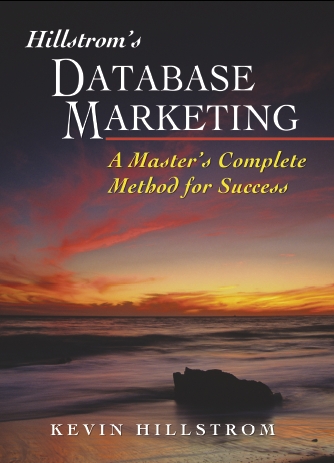Does It Really Cost More To Acquire Customers Than To Retain Customers?
July 15, 2006: One of the most quoted comments from database marketers is the time-honored "it costs 'x' times more to acquire a customer than to retain a customer." In particular, this comment is offered by vendors of software that allow you to attempt to retain your best customers.
The real question is whether your company properly allocates spend between customer retention and customer acquisition activities. Catalog companies have the most control over this relationship. If they don't mail catalogs, they don't retain customers. If they don't mail catalogs, they don't acquire customers. Online companies are in a hybrid state. Because the website is always up and running, retained and acquired customers can visit the site without being prompted by the company. Retail is a fundamentally different business, requiring brand marketing to build relationships.
This spreadsheet allows a user to change advertising relationships in acquisition and retention spend, and then be able to see how advertising spend impacts profit, loss, and the number of active buyers over a three year period of time.
Go ahead and play with cells B12 - C14. This is where you change the amount of spend in retention and acquisition during each of three years. When you do this, the spreadsheet calculates three year profit, and tallies the number of buyers who exist at the end of three years.
The spreadsheet clearly demonstrates that optimizing retention and acquisition spend is what matters, not that is costs "x" dollars more to acquire a customer than to retain a customer. Your company needs to determine how fast it wants to grow, or how profitable it wants to be. Once the executive team makes these decisions, marketers can allocate spend between retention and acquisition activities as appropriate.
As a final comment, customer retention activities really need to be focused on merchandise, products and customer service. Marketers like to use tools like promotions, contests, free shipping, gift with purchase, to theoretically increase retention. I recall doing a six-month long test at Eddie Bauer, where one group of customers received 20% off $100 purchase promotions, the other group didn't. At the end of six months, the each group spent the exact same amount of money. However, the group receiving the promotions spent their dollars during the promotional periods. The group not eligible for the promotion spread their dollars out over the course of a year. The group receiving the promotion generated much less profit, because that group of customers got 20% off their merchandise. In this case, customer retention was much more expensive than what would have been spent acquiring new customers. And in the end, no additional customers were retained.
Online Merchandise Productivity
July 8, 2006: Last week, I discussed how catalogers measure the productivity of merchandise in catalogs. Online marketers have similar tools available to them, to measure the productivity of products featured on a website.
First, measure how much you spend to maintain and run your website. Let's assume that a company spend $100,000 to keep a website up and running each year.
Second, count all clicks on the website, over an annual period of time. For instance, assume that a website has 1,000,000 clicks annually.
Third, count all clicks that relate to a customer looking at merchandise or services. In our example, let's assume that 500,000 of the clicks occur when a customer looks at merchandise. Therefore, half of the clicks are merchandise related. The other half are related to the overall use of the website. Half of the expense of the website needs to be divided equally among the products on the website. Half of the expense needs to be allocated to each item, based on how many times the item was clicked.
Fourth, count how many products/services you have on your website. In our example, let's assume there are 1,000 products on the website. If there are 1,000 products, then we divide the half of the expense ($50,000) by the 1,000 products. This yields $50 of expense per product.
Fifth, count how many clicks happened for the product you wish to analyze. Let's assume that our product had 10,000 clicks. Therefore, we need to allocate $50,000 of expense proportionally, at a rate of 10,000/500,000 = 2%, for this product. This yields another 0.02*$50,000 = $1,000 of expense.
E-mail and online marketing expenses would be allocated next. In this example, I will not include these expenses.
Sixth, we need to run a profit and loss statement. Let's assume that this product had $10,000 of net sales, a 40% gross margin, and it cost 10% of net sales to pick/pack/ship the product. Here is how our profit and loss statement looks:
Net Sales $10,000
Gross Margin (40% of Net Sales) $4,000
Pick/Pack/Ship Expense (10% of Net Sales) $1,000
Website Expense (Calculated Above) $1,100
Variable Operating Profit $1,900
Profit as a Percentage of Sales 19.0%
Profit Per Thousand Clicks (PPTC) $190
The last metric, profit per thousand clicks (PPTC), is an important metric. It allows the marketer to evaluate each product on the website, to see which ones are most productive. Those products that convert clicks to purchases at a good rate will have a high PPTC metric.
There are many oversimplifications in this analysis. However, it is designed to illustrate how merchandise productivity and profitability can be understood for each product on a website. The marketer needs to subtract online marketing expense (paid search, affiliates, portals etc.) as well as e-mail marketing expense, in order to have a valid profit and loss statement for each product on the website. This analysis serves as a place to get the marketer started understanding online merchandise productivity.
Catalog Profit and Loss, DMPC and PMPC
July 4, 2006: When catalogers analyze how merchandise performs in a catalog, they use a series of formulas to compare all merchandise on equal footing.
Two of the most important measures used by catalogers are "DMPC" and "PMPC". DMPC = Demand per Thousand Pages Circulated. PMPC = Profit per Thousand Pages Circulated.
The formulas are simple to implement in a spreadsheet. Let's calculate DMPC for two different products featured in a catalog.
Our sample catalog was mailed to 200,000 households, and was 64 pages in total.
Product #1 was featured on 25% of one page in the catalog. It generated $2,000 demand (demand = all merchandise sold, even if merchandise was not available. Returns are not counted in demand).
Product #2 was featured on 10% of one page in the catalog. It generated $1,000 demand.
DMPC is calculated as follows: (Total Demand) / (% of Page * Circulation / 1,000).
For Product #1, the calculation is as follows: ($2,000) / (0.25 * 200,000 / 1,000) = ($2,000) / (50) = $40.00.
For Product #2, the calculation is as follows: ($1,000) / (0.10 * 200,000 / 1,000) = ($1,000) / (20) = $50.00.
In this example, the second product actually performed better. Although it generated half of the demand, the merchandise was featured on much less space in the catalog. As a result, the second product was truly more productive than the first product.
Profit per Thousand Pages Circulated is a metric that evaluates the overall profitability of merchandise. Each product in a catalog has a "profit factor", a rate which product availability, returns, and pick/pack/ship costs are factored in.
PMPC = (DMPC) * (Profit Factor) - (Catalog Cost per Thousand Pages Circulated).
In our example, let's assume the following: Product #1 = 30% profit factor. Product #2 = 22% profit factor, due to a much greater return rate. Catalog Cost per Thousand Pages Circulated = $9.00. In this example, it costs $9.00 to print, produce and mail every 1,000 pages of a catalog.
PMPC for Product #1 = $40.00 * 0.30 - $9.00 = $12.00 - $9.00 = $3.00.
PMPC for Product #2 = $50.00 * 0.22 - $9.00 = $11.00 - $9.00 = $2.00.
In our example, the PMPC for Product #1 is greater than the PMPC for Product #2.
Catalogers need to evaluate each item of merchandise in the catalog on these two metrics, to understand how productive each item is. By understanding which items drive the most volume, drive the most volume given the amount of space allocated to an item (DMPC), and the profit given the amount of space allocated to an item (PMPC), the cataloger can merchandise a catalog with the most productive merchandise available.
Sophisticated catalogers allocate the online demand driven by a catalog, by item, for the most complete view of catalog merchandise profitability.

 Kevin is one of America's leading expert in Database Marketing, Multi-Channel Marketing
and Business Intelligence. He is recognized for his analysis and
understanding of complex customer behavior across channels, brands or products.
Kevin is one of America's leading expert in Database Marketing, Multi-Channel Marketing
and Business Intelligence. He is recognized for his analysis and
understanding of complex customer behavior across channels, brands or products.